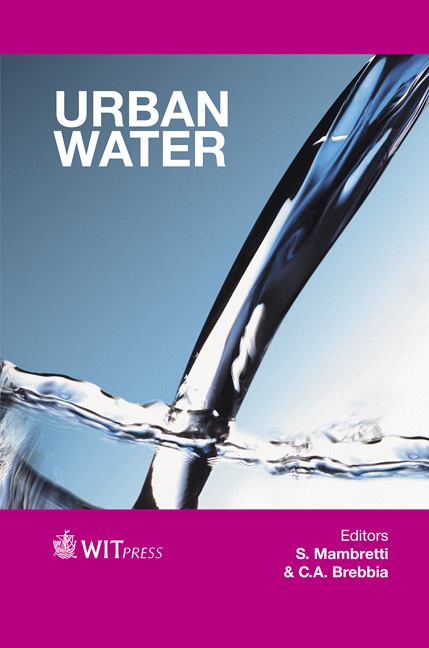Genetic Algorithms For Leak Detection In Water Supply Networks
Price
Free (open access)
Transaction
Volume
122
Pages
9
Published
2012
Size
454 kb
Paper DOI
10.2495/UW120061
Copyright
WIT Press
Author(s)
S. Mambretti & E. Orsi
Abstract
Genetic algorithms for leak detection in water supply networks S. Mambretti & E. Orsi DIIAR, Politecnico di Milano, Italy Abstract In many countries water losses can be much higher than 50%, with great economic losses because of the energy required for pumping and for the primary treatments that are very often required. Very often losses can be detected only when water rises in the streets, or during an expensive campaign, which are very useful to punctually find existing losses, but with the disadvantage that the actual situation of the network remains unknown. To this end, a methodology has been developed which requires the installation of a number of instruments on the network, in order to measure pressures and discharges; then, the demands at the nodes are changed by means of a genetic algorithm and the network is simulated with a computer program, in order to match the readings of the instruments; losses are higher where the demands have been most increased. In this paper, the general methodology is presented, and the application on a case study, performed in a comparatively small town (Castegnato), in the north of Italy, with 8000 inhabitants and 9 km2 of extension, and where the modelled network length is equal to 43.3 km and water losses exceed 60% of the total daily volume. The preliminary simulations show that the methodology is able to detect the different hypothesized scenarios and has been of great support in the decision about the number, typology and position of the devices to be installed. Moreover, it is shown that this method allows the detection of the areas where the pipe conditions are most critical, therefore providing a new indicator for deciding, in case of pipe rupture, whether the conduit is to be repaired or replaced. Keywords: water supply networks, water losses, genetic algorithms, hydraulic modelling.
Keywords
water supply networks, water losses, genetic algorithms, hydraulic modelling





